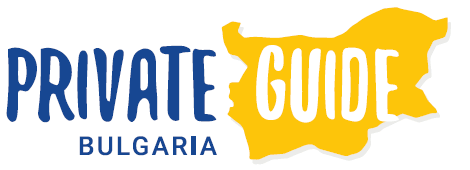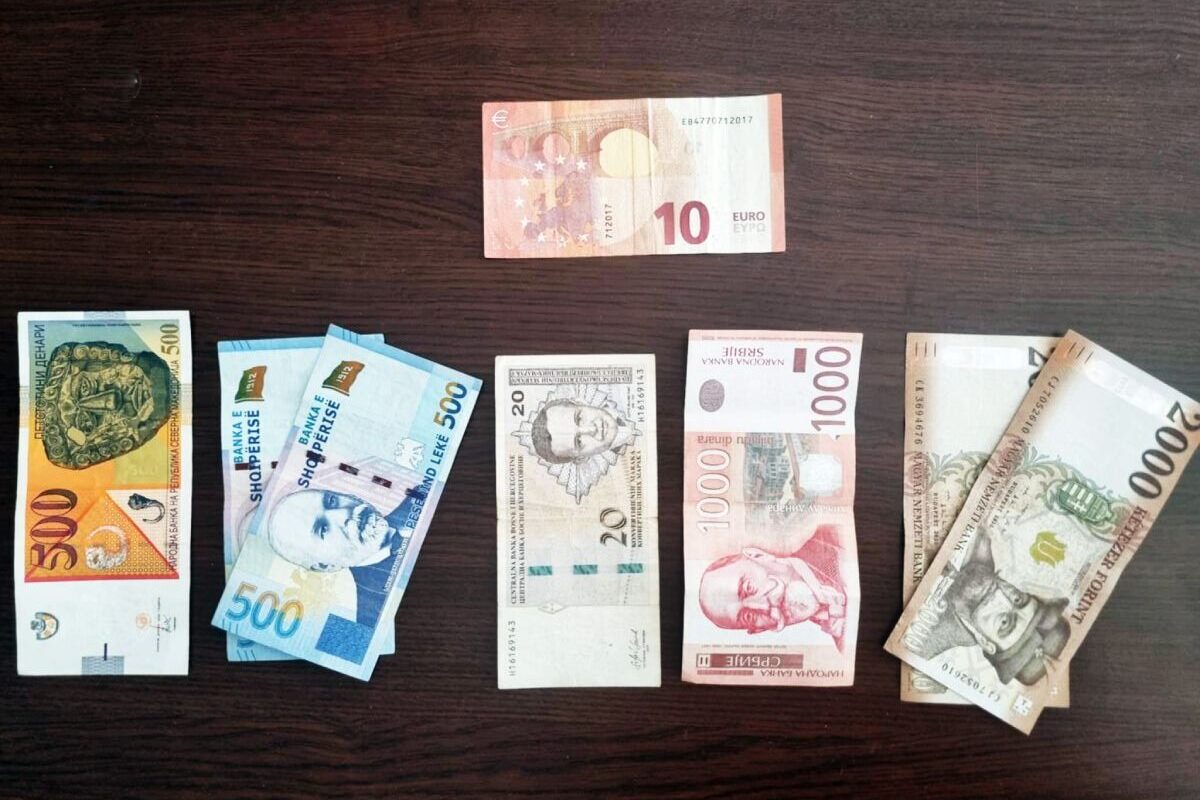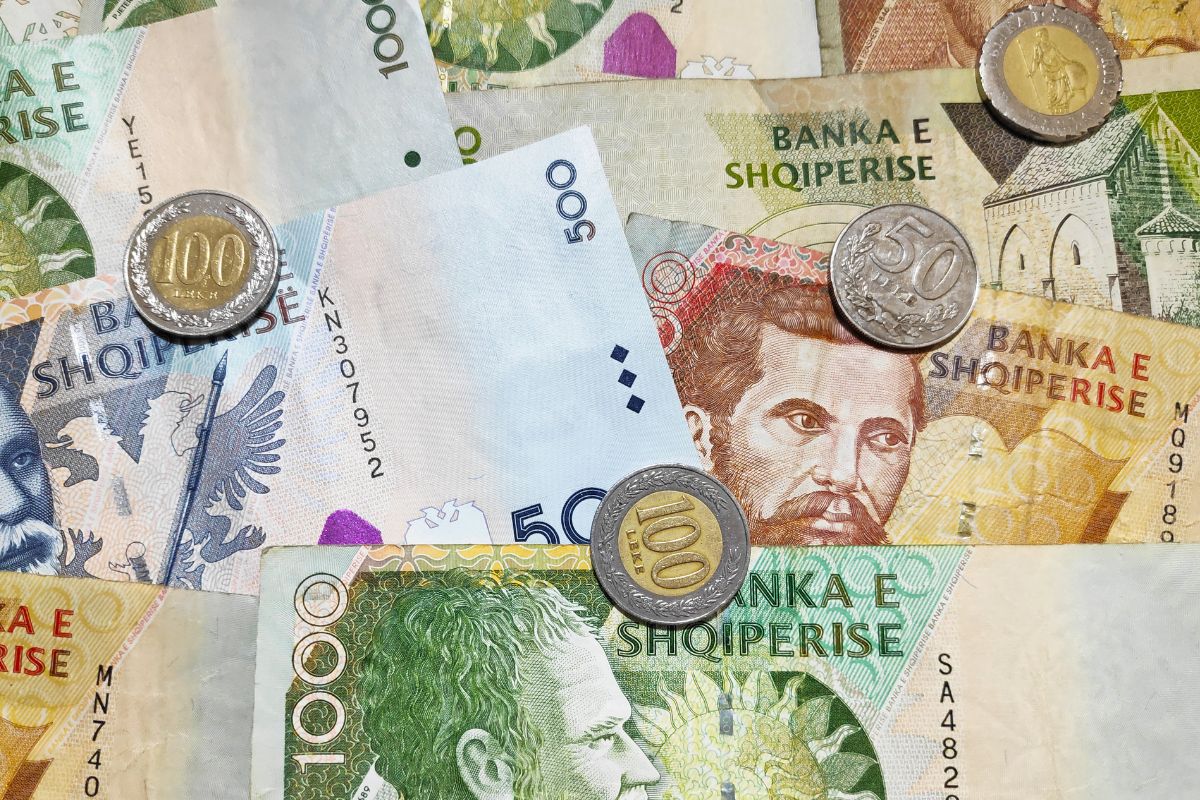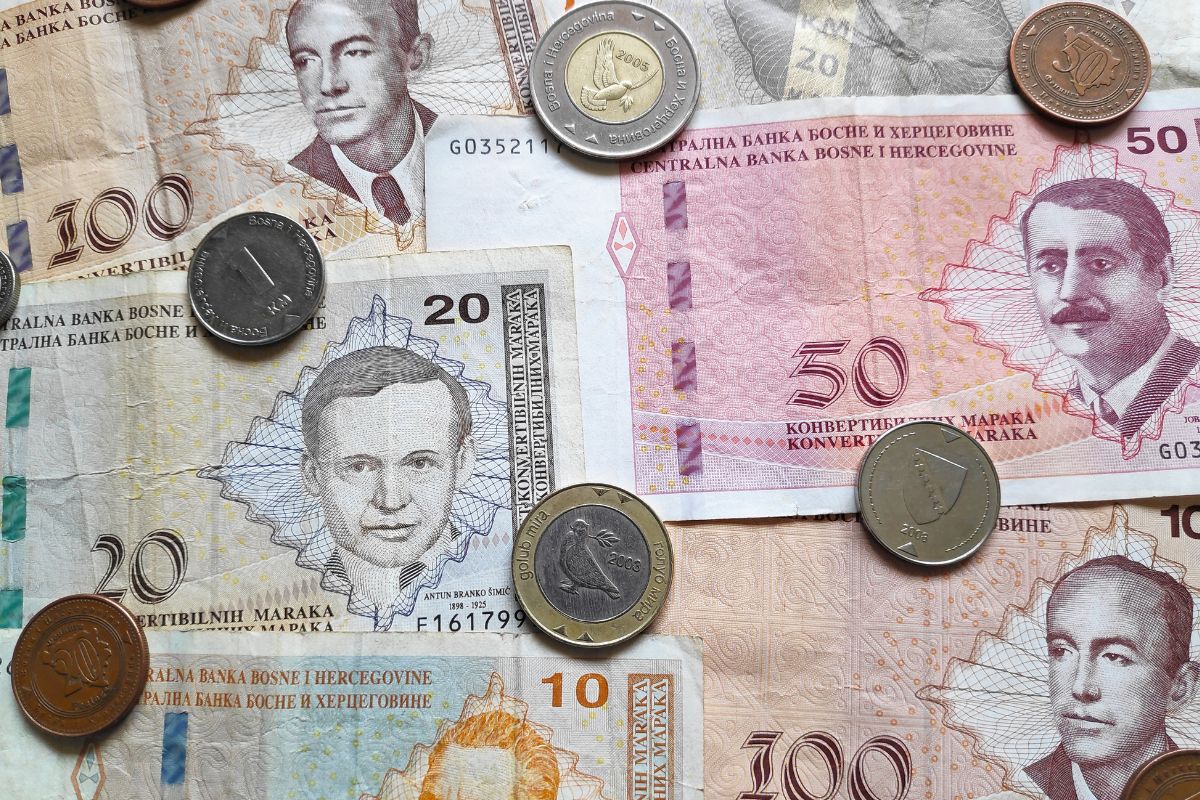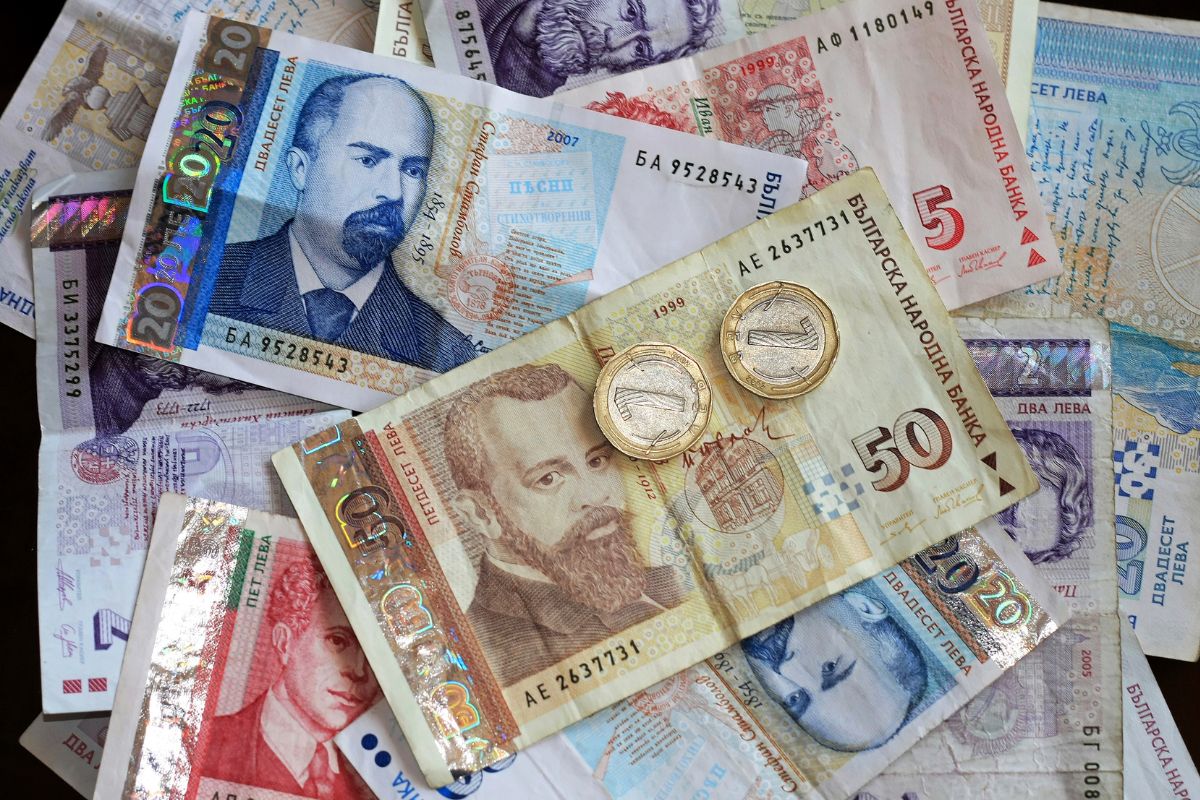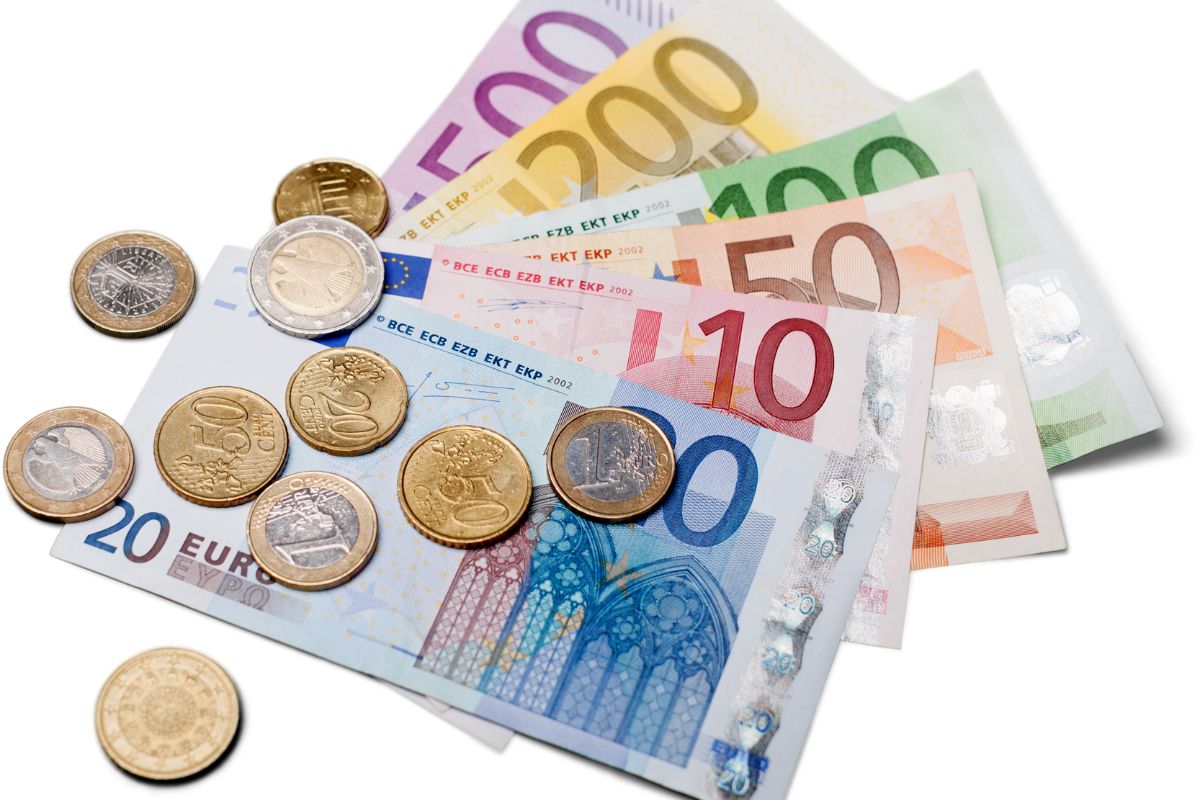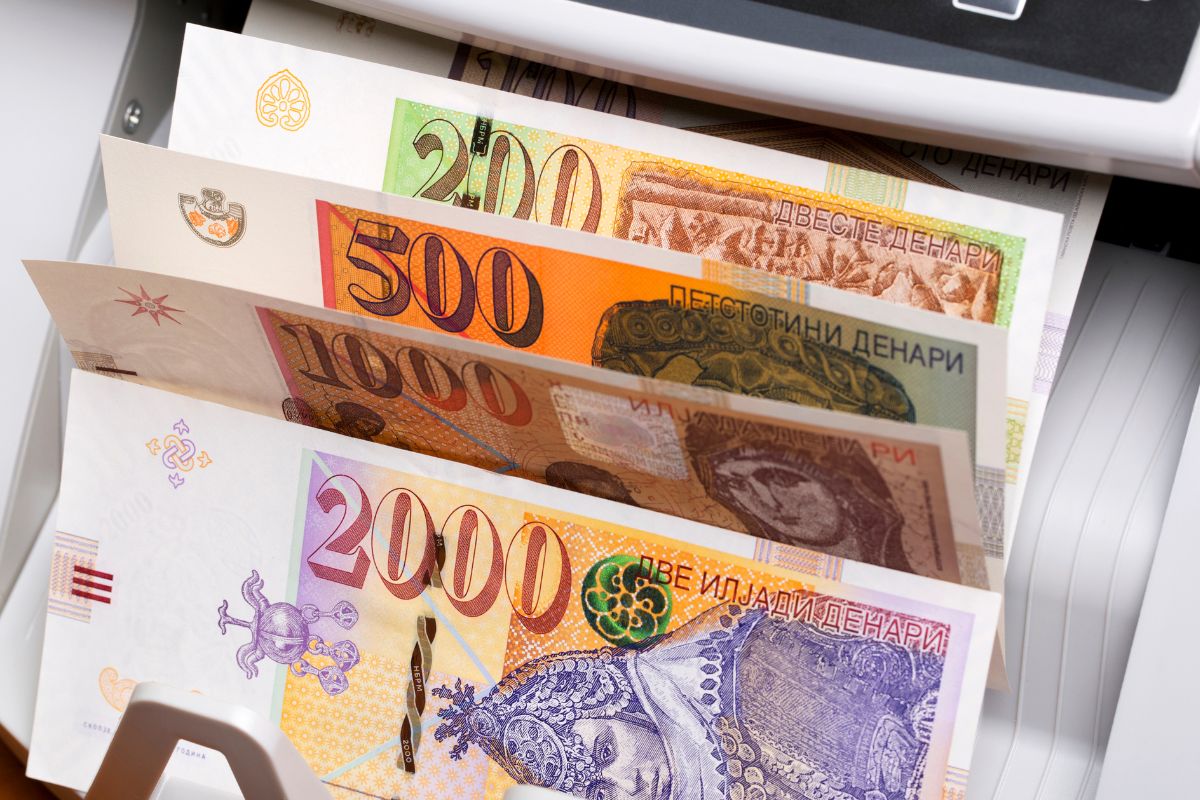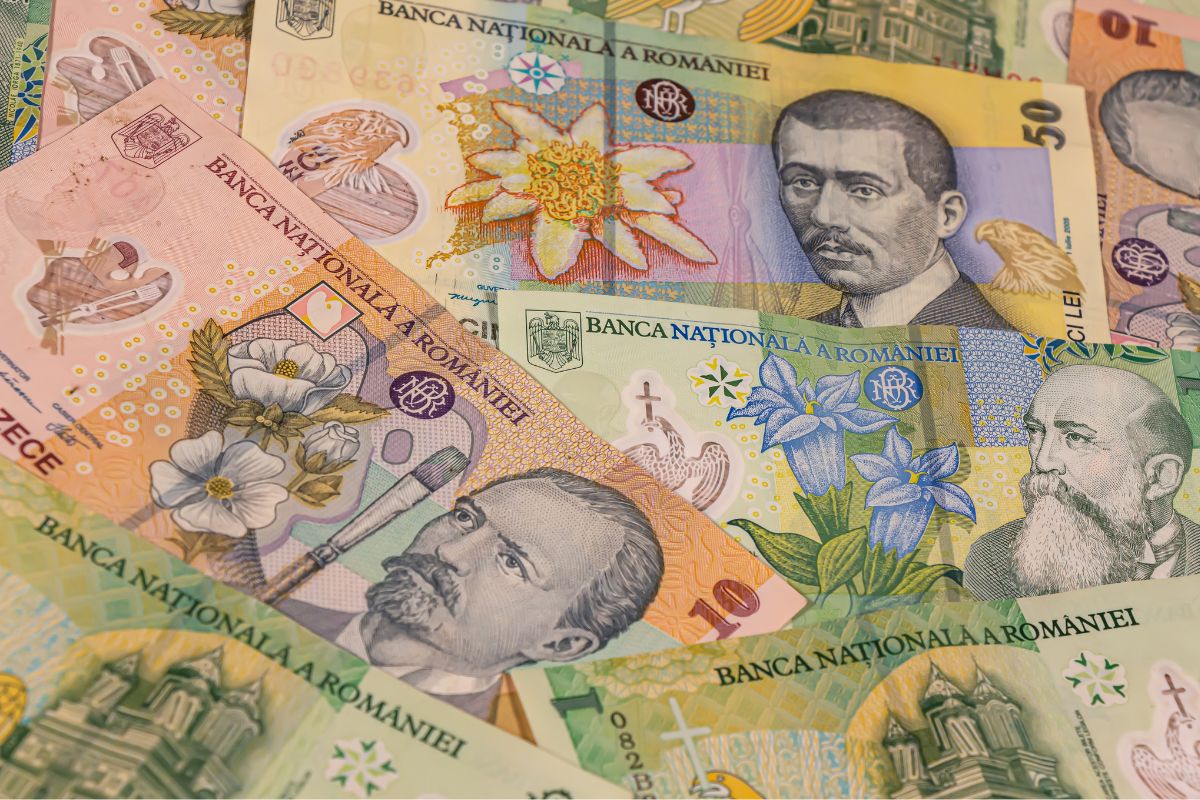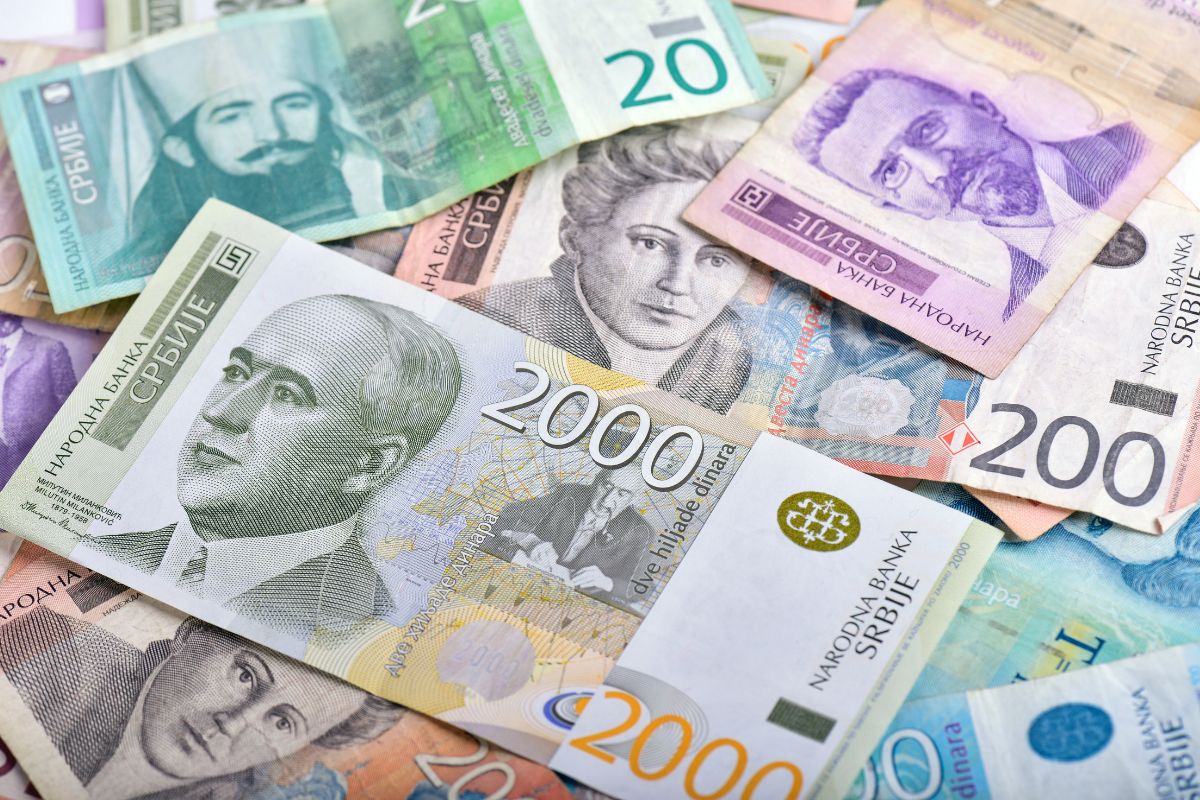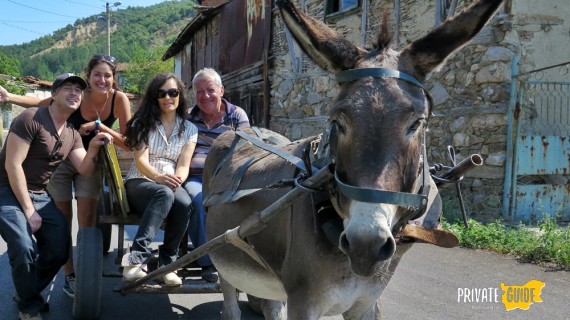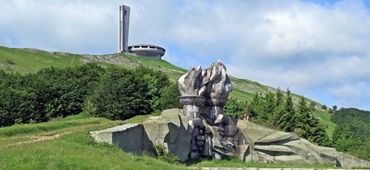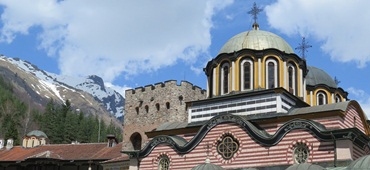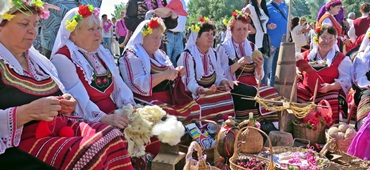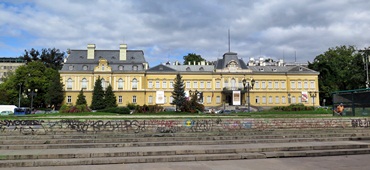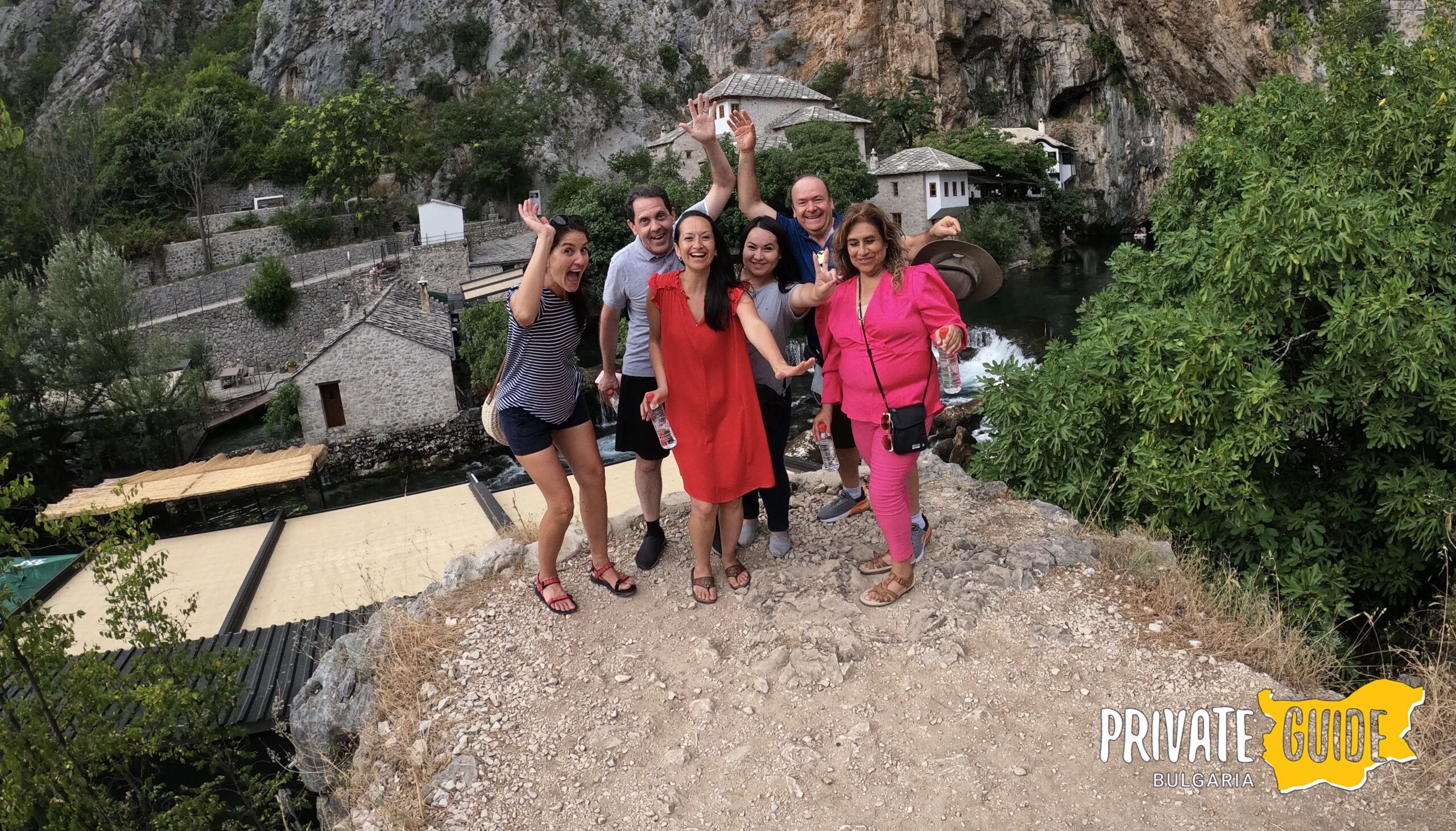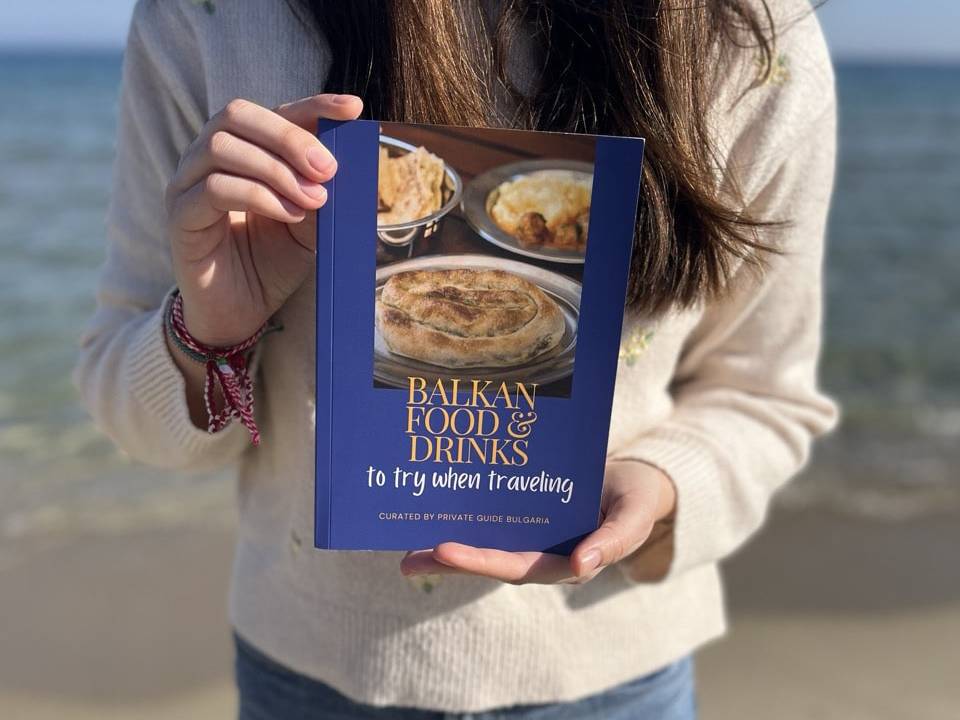All Currencies Used in the Balkan Countries
The Balkan countries don’t share a single currency, and knowing what’s used where is essential for travelers. Some nations have adopted the euro, while others continue to use their traditional currencies.
The euro is the official currency in Slovenia, Croatia, Kosovo, and Montenegro, while the following countries have their own:
- Bulgaria (Lev),
- Serbia (Dinar),
- Romania (Leu),
- Albania (Lek),
- North Macedonia (Denar),
- Bosnia and Herzegovina (Convertible Mark).
Although Kosovo and Montenegro use the euro, neither is in the EU or the Eurozone. Bulgaria, meanwhile, is expected to adopt the euro officially in 2026.
👉 Don’t miss our full guides:
What currency does Albania use? 🇦🇱
Currency: The official currency is the Albanian Lek (ALL, L, since 1926). Colorful banknotes depict national heroes, cultural monuments, and traditional designs.
Card: Credit and debit cards are not widely accepted, especially outside major cities or tourist centers. Always keep enough cash for daily expenses.
Banknotes: 200, 500, 1000, 2000, 5000 Lek
Coins: 1, 5, 10, 20, 50, 100 Lek
What does Albanian currency look like?
The Lek comes in vibrant notes featuring figures such as King Zog I and writer Pjetër Bogdani, with scenes of historic landmarks.
Does Albania use the euro?
The euro is not the official currency, though some hotels and tourist businesses may accept it.
Is Albania cheap or expensive?
Albania is considered affordable compared to Western Europe, with budget-friendly meals and accommodations.
Is the Albanian currency strong?
The Lek is weaker compared to both the euro and the US dollar, making Albania affordable for most travelers.
What can you buy with 100 Albanian Lek?
Roughly a coffee or a small snack at a café, since 100 ALL equals less than €1.
How much cash can I take to Albania?
Travelers carrying over 1,000,000 ALL (about €9,000) must declare it at customs.
What currency is used in Bosnia and Herzegovina? 🇧🇦
Currency: The official currency is the Bosnian Convertible Mark (BAM, KM, since 1998). It is pegged to the euro at a fixed rate.
Card: Cards can be used in big cities, but many smaller shops and rural places only take cash.
Banknotes: 10, 20, 50, 100, 200 KM
Coins: 5 fenings, 10 fenings, 20 fenings, 50 fenings, 1, 2, 5 KM
What does Bosnian currency look like?
Banknotes feature educators, poets, and scientists, while coins showcase native flora.
Does Bosnia use the euro?
Not officially, though euros are sometimes accepted.
Is Bosnia cheap or expensive?
Bosnia is very affordable, with low costs for food, transport, and accommodation.
Is the Bosnian currency strong?
The mark is stable because it’s pegged to the euro.
What can you buy with 100 BAM?
That amount buys a nice dinner for two at a mid-range restaurant.
How much cash can I take to Bosnia?
Amounts above 10,000 BAM (around €5,000) must be declared.
What is the currency in Bulgaria? 🇧🇬
Currency: The Bulgarian Lev (BGN, лв. / LV, in use since 1999 in its current version). Bulgaria will adopt the euro in 2026, but as of now, all payments are made in leva.
Card: Cards are accepted in large cities, hotels, and restaurants, but cash is still preferred in small towns and rural areas.
Banknotes: 5, 10, 20, 50, 100 lv
Coins: 1 stotinka, 2 stotinki, 5 stotinki, 10 stotinki, 20 stotinki, 50 stotinki, 1, 2 lv
What does Bulgarian currency look like?
Notes feature cultural icons like Ivan Milev and Paisius of Hilendar. Coins often show the Madara Rider or other national symbols.
Does Bulgaria use the euro?
Prices are displayed in both BGN and EUR, but payment is currently accepted only in leva. From January 2026 on, EUR will also be accepted.
Is Bulgaria cheap or expensive?
Bulgaria offers great value, especially compared to Western Europe.
Is the Bulgarian currency strong?
The lev is pegged to the euro at a fixed rate, making it stable.
What can you buy with 100 BGN?
A nice dinner for two at a quality restaurant or groceries for a week.
How much cash can I take to Bulgaria?
Amounts over €10,000 must be declared.
👉 Bulgaria has so much to offer! Check all of our tour options.
What currency does Croatia use? 🇭🇷
Currency: Croatia adopted the euro (EUR, €, since 2023).
Card: Cards are widely accepted throughout the country.
Banknotes: €5, €10, €20, €50, €100
Coins: 5cent, 10cent, 20cent, 50cent, €1, €2
Is Croatia cheap or expensive?
Croatia is pricier than other Balkan countries, especially along the coast.
Is the euro strong in Croatia?
Yes, as Croatia is in the Eurozone.
What can you buy with 100 EUR?
Dinner for two with drinks in Zagreb or a short boat excursion in Dubrovnik.
How much cash can I take to Croatia?
Amounts above €10,000 must be declared.
What currency is accepted in Kosovo? 🇽🇰
Currency: Although not part of the Eurozone, Kosovo uses the euro (EUR, €, since 2002) as its de facto currency.
Card: Cards are not widely accepted. Cash is essential, especially outside Pristina.
Banknotes: €5, €10, €20, €50, €100
Coins: 5cent, 10cent, 20cent, 50cent, €1, €2
Is Kosovo cheap or expensive?
Kosovo is among the most affordable destinations in Europe.
Is the euro strong in Kosovo?
Yes, though locals often rely on cash transactions.
What can you buy with 100 EUR?
Plenty – from several meals at local restaurants to a two-night stay in a guesthouse.
How much cash can I take to Kosovo?
Over €10,000 must be declared.
What is the type of currency in Montenegro? 🇲🇪
Currency: Montenegro also uses the euro (EUR, €, since 2002) despite not being in the EU or Eurozone.
Card: Cards are increasingly accepted, but cash is still common, especially in small towns.
Banknotes: €5, €10, €20, €50, €100
Coins: 5cent, 10cent, 20cent, 50cent, €1, €2
Is Montenegro cheap or expensive?
Moderately priced, though coastal areas tend to be more expensive.
Is the euro strong in Montenegro?
Stable, as Montenegro directly uses the euro.
What can you buy with 100 EUR?
A half-day boat tour or a weekend dining budget for two.
How much cash can I take to Montenegro?
Over €10,000 must be declared.
What is the currency of North Macedonia? 🇲🇰
Currency: The official currency is the Macedonian Denar (MKD, den, since 1993).
Card: Cards are accepted in Skopje and larger towns, but less so in rural areas.
Banknotes: 10, 20, 50, 100, 200, 500, 1000, 2000 Den
Coins: 1, 2, 5 Den
What does Macedonian currency look like?
Banknotes show historical monuments and Macedonian cultural icons.
Does North Macedonia use the euro?
No, but euros are sometimes accepted in tourist areas.
Is North Macedonia cheap or expensive?
It’s budget-friendly for travelers.
Is the denar strong?
The denar has a stable fixed exchange rate against the euro.
What can you buy with 100 MKD?
A coffee and a pastry or a bus ticket within Skopje.
How much cash can I take to North Macedonia?
Over €10,000 must be declared.
What currency does Romania use? 🇷🇴
Currency: The national currency is the Romanian Leu (RON, lei, since 1867 in original form, modern leu since 2005).
Card: Widely accepted across Romania. Cash may still be more useful in remote villages.
Banknotes: 1, 5, 10, 20, 50, 100, 200, 500 Lei
Coins: 5 bani, 10 bani, 50 bani
What does the Romanian currency look like?
Notes are colorful polymers depicting Romanian cultural figures and unique flora.
Does Romania use the euro?
Not yet. Prices and payments are in RON.
Is Romania cheap or expensive?
Overall, affordable, though Bucharest is pricier than rural areas.
Is the Romanian currency strong?
The leu fluctuates but remains relatively stable against the euro.
What can you buy with 100 RON?
A filling lunch for two or tickets to a cultural performance.
How much cash can I take to Romania?
Over €10,000 must be declared.
What is the currency in Serbia? 🇷🇸
Currency: The official currency is the Serbian Dinar (RSD, дин., since 2003 in current form).
Card: Cards are accepted in cities but less so in small towns and villages.
Banknotes: 10, 20, 50, 100, 200, 500, 1000, 2000, 5000 din
Coins: din. 1, din. 2, din. 5
What does the Serbian currency look like?
Banknotes honor Serbian writers, scientists, and rulers.
Does Serbia use the euro?
No, although euros may be informally accepted in tourist towns.
Is Serbia cheap or expensive?
Serbia is very affordable compared to Western Europe.
Is the Serbian currency strong?
Weaker than the euro, but stable in recent years.
What can you buy with 100 RSD?
A small snack or a bus ticket – since 100 RSD equals under €1.
How much cash can I take to Serbia?
Over €10,000 must be declared.
What currency is used in Slovenia? 🇸🇮
Currency: Slovenia has used the euro (EUR, €, since 2007) as a full Eurozone member.
Card: Cards are accepted everywhere, even for small payments.
Banknotes: €5, €10, €20, €50, €100
Coins: 5cent, 10cent, 20cent, 50cent, €1, €2
Is Slovenia cheap or expensive?
Slovenia is more expensive than most Balkan neighbors but less than Western Europe.
Is the euro strong in Slovenia?
Yes, Slovenia follows Eurozone regulations.
What can you buy with 100 EUR?
A night in a mid-range hotel or a special dinner for two.
How much cash can I take to Slovenia?
Over €10,000 must be declared.
Balkan Currencies FAQ
💰 Do I always need local currency in the Balkans?
Yes. Even in countries that use or accept the euro, you’ll need local cash for small purchases like coffee, bus tickets, or market stalls.
💳 Can I just use my credit or debit card?
Cards are widely accepted in cities, supermarkets, and hotels, but don’t rely on them everywhere.
- Rural areas, local eateries, and transport are often cash-only.
- Carrying some local currency will save you stress.
🏧 What’s the best way to exchange money and get cash?
- ATMs are the easiest and safest option. They’re widely available in cities and usually give better rates than money changers back home.
- Avoid airport exchanges for large sums because the rates are worse.
- Exchange offices often give better rates than banks.
- Bring a backup card in case one doesn’t work.
- In rural areas, exchange options are limited, so plan ahead.
🛑 What are the ATM limits in the Balkans?
Banks often impose withdrawal caps. US-based cards typically allow daily withdrawals between $500 and €2000, but limits vary. ATMs charge local fees, and your bank may add more. It’s more cost-effective to withdraw larger amounts less often.
💶 Can I use euros or dollars instead of local money?
- Euros are widely accepted in tourist areas across the Balkans. In some countries (Slovenia, Croatia, Montenegro, Kosovo), they’re official or unofficial currencies.
- In non-Euro countries (such as Albania, Serbia, North Macedonia, Bosnia, and Bulgaria), you’ll often be charged in euros at hotels and for tours — but everyday spending still requires local cash.
- Dollars are rarely accepted directly.
🍽️ How much to tip in the Balkans?
Tipping is appreciated but not obligatory throughout the Balkans.
- Rounding up or leaving 5-10% is common.
- Tips are best given in the local currency, but euro coins are often accepted in tourist areas.
- In some countries, the restaurant service is included in the final price, so check for that in advance.
👉 For Balkan restaurant and local food recommendations, download our free ebook: Balkan Food and Drinks to Try When Travelling
🛂 Can I bring in as much cash as I want?
Yes, but amounts over €10,000 (or equivalent) must be declared at borders.
